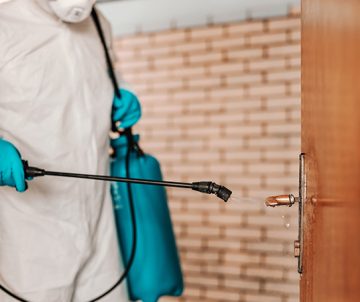When it comes to keeping our homes and businesses pest-free, hiring the right pest control service is crucial. Here are some pitfalls you might encounter if you don't make the right choice:
- Unsuccessful Treatments: Inexperienced or subpar pest control services may not effectively tackle the root of the problem, leading to recurrent infestations.
- Wasted Money: Investing in a service that doesn't provide results means throwing away your hard-earned money.
- Potential Health Risks: Improper use of fumigation or treatments can be harmful to you, your family, or your pets.
- Damage to Property: Some pests, like termites, can cause significant damage if not treated correctly and promptly.
- Lost Peace of Mind: Without reliable pest control, the stress and discomfort of dealing with pests can become an ongoing issue.
Pest problems require professional intervention. Trusting experienced services like Environ Pest Control London ensures effective solutions, value for money, and most importantly, peace of mind.
Experience the difference with expertise!
Don't leave your pest problems to chance. Hiring an expert pest control company like Environ Pest Control London ensures the safety and well-being of your space. With years of expertise and a commitment to excellence, we're here to help. Give us a call at 020 3875 8225 or drop us an email at info@environpestcontrol.co.uk, and experience the peace of mind that comes with choosing the best.
Dive deeper into the world of pest control with us!
Thank you for taking the time to read our blog. We're committed to providing insightful content to keep your space pest-free. Don't forget to check out our other pest control blog posts, such as Combatting the dreaded trio: Bedbugs, moths, and rats – Expert insights unveiled, to gain more knowledge and insights.
Stay connected with us for more tips, tricks, and updates on pest control. Follow us on our social media accounts to be a part of our growing community and stay informed about the latest in pest control solutions.
FAQs about pest control
Why do I still see pests after treatment?
It's normal to see some pests shortly after treatment. These are typically the ones affected by the fumigation and are emerging from their hiding places. They should diminish over a few days.
How often should I have my property treated?
The frequency varies depending on the type of pests and the level of infestation. Generally, annual or bi-annual treatments are recommended for most homes.
Are the treatments safe for my children and pets?
Yes, when applied by professionals, treatments are safe. However, it's best to keep children and pets away during the process and until the treated areas are dry.
Can pests become resistant to treatments?
Over time, some pests can develop resistance. That's why it's crucial to hire professionals who stay updated on the latest techniques and products to ensure effectiveness.
Do I need to prepare my home before a treatment?
Yes, professionals usually provide specific guidelines, like covering food and moving furniture, to ensure the treatment is effective and safe. Always follow the advice given by your pest control company.
Author Biography
Philip Mark is an esteemed writer specialising in pest control topics. With over a decade of experience in the industry, Philip has dedicated his career to debunking common myths and enlightening readers about effective pest control methods. His insightful articles have been a source of knowledge for homeowners and businesses alike, guiding them towards safer and more effective pest management solutions. When he isn't penning down his expertise, Philip enjoys exploring the countryside and staying updated with the latest advancements in the field.




